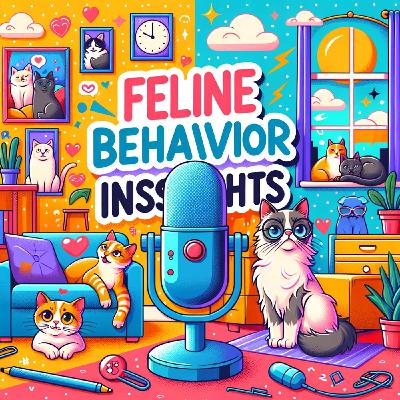Decoding Feline Body Language: Unlock the Secrets of Your Cat's Emotions and Intentions
Update: 2025-11-24
Description
Cats are fascinating creatures whose behavior offers a window into their emotions and intentions. According to Tuft & Paw, cats forecast their next moves by pointing their body in the direction they want to go, so if a cat is standing sideways, it might be preparing to move away. A cat’s posture is a key indicator of its mood. When a cat stretches out, it’s showing it feels safe and unthreatened, but when it scrunches into a ball, it’s likely feeling anxious or in pain. Fearful cats often crouch low to the ground, and their whiskers may be pulled close to their face, while confident cats push their whiskers forward.
Tail position is another important clue. Best Friends Animal Society notes that a high, upright tail usually means a cat is relaxed and happy, often with a slight curve at the tip when greeting someone they like. However, if the tail is puffed up, the cat is likely scared or defensive, trying to look bigger to ward off a threat. A gently swaying tail signals contentment, while a flicking or thrashing tail can mean agitation or excitement.
Ears and eyes also reveal a lot. Relaxed cats have ears forward and eyes soft, sometimes blinking slowly, which is a sign of trust. When a cat’s ears are flattened or turned sideways, it’s feeling stressed or afraid. Dilated pupils can indicate excitement, fear, or playfulness, depending on the context.
Vocalizations are another way cats communicate. Purring is commonly linked to relaxation, but cats may also purr when stressed or in pain. Meowing can be a greeting, a request, or a way to get attention. Hissing or growling is a clear warning that a cat feels threatened and wants you to back off.
Affectionate behaviors include head butting, chin rubbing, and slow blinking. These actions are not just signs of love but also ways for cats to mark their territory with scent glands on their faces. Kneading with their paws is a leftover kitten behavior that shows contentment.
Understanding these signals helps listeners build a stronger bond with their cats and respond appropriately to their needs. Recognizing the subtle cues in a cat’s body language can prevent misunderstandings and create a more harmonious home.
Thank you for tuning in. Remember to subscribe for more insights. This has been a quiet please production, for more check out quiet please dot ai.
For more http://www.quietplease.ai
Get the best deals https://amzn.to/3ODvOta
This content was created in partnership and with the help of Artificial Intelligence AI
Tail position is another important clue. Best Friends Animal Society notes that a high, upright tail usually means a cat is relaxed and happy, often with a slight curve at the tip when greeting someone they like. However, if the tail is puffed up, the cat is likely scared or defensive, trying to look bigger to ward off a threat. A gently swaying tail signals contentment, while a flicking or thrashing tail can mean agitation or excitement.
Ears and eyes also reveal a lot. Relaxed cats have ears forward and eyes soft, sometimes blinking slowly, which is a sign of trust. When a cat’s ears are flattened or turned sideways, it’s feeling stressed or afraid. Dilated pupils can indicate excitement, fear, or playfulness, depending on the context.
Vocalizations are another way cats communicate. Purring is commonly linked to relaxation, but cats may also purr when stressed or in pain. Meowing can be a greeting, a request, or a way to get attention. Hissing or growling is a clear warning that a cat feels threatened and wants you to back off.
Affectionate behaviors include head butting, chin rubbing, and slow blinking. These actions are not just signs of love but also ways for cats to mark their territory with scent glands on their faces. Kneading with their paws is a leftover kitten behavior that shows contentment.
Understanding these signals helps listeners build a stronger bond with their cats and respond appropriately to their needs. Recognizing the subtle cues in a cat’s body language can prevent misunderstandings and create a more harmonious home.
Thank you for tuning in. Remember to subscribe for more insights. This has been a quiet please production, for more check out quiet please dot ai.
For more http://www.quietplease.ai
Get the best deals https://amzn.to/3ODvOta
This content was created in partnership and with the help of Artificial Intelligence AI
Comments
In Channel





